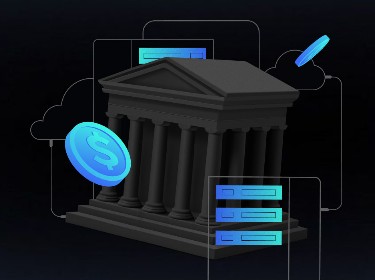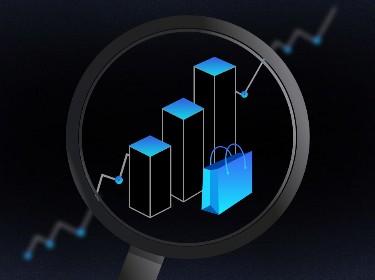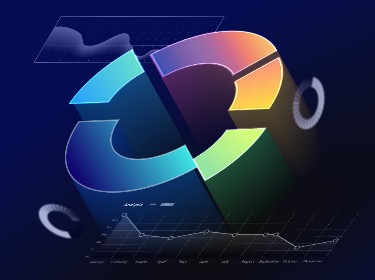By meticulously analyzing customer behaviors, preferences, and purchasing patterns, organizations can tailor their offerings and communication strategies, thereby fostering customer loyalty and driving revenue growth.
According to Deloitte’s research, 68% of chief data officers identify the enhancement of data and analytics usage as their foremost priority.
When leveraged effectively, customer data analytics emerges as a powerful instrument that can unlock numerous benefits such as increased customer retention, minimized churn, and enhanced profits.
In this article, our R&D consulting company will share best practices on customer data analytics. You will find valuable tips on how to adeptly harness customer analytics to drive informed decision-making, enhance customer experiences, and steer your business towards sustained profitability.
What is customer data analytics and why does it matter?
Customer data analytics is the process of systematic collection and analysis of customer data to gain useful insights on client behavior. By leveraging this data, businesses can adjust marketing strategies, enhance customer experiences, and optimize product offerings to better align with consumer needs and preferences.
Businesses that understand their customers are better positioned to anticipate their behaviors and optimize customer journeys.
Need to enhance customer experience? Our big data consultants can help you with transforming your customer data into actionable insights that drive business success
What are the benefits of customer data analytics?
![]()
There are short-term and long-term benefits of customer data analytics.
In the short term, businesses can enjoy better understanding of customer journeys, improved customer segmentation, personalized marketing efforts, and increased conversion rates.
In the long term, organizations will benefit from increased customer retention, identified upselling and cross-selling opportunities, and maximized revenue.
Better understanding of customer journeys
Utilizing customer data analytics allows you to map out detailed customer journeys, identifying key touchpoints and interactions that customers have with your brand. This is crucial in various industries. For example, data analytics services for the automotive industry can track how customers interact with different car models online and offline, leading to optimized showroom experiences and targeted marketing campaigns.
This enables you to understand and optimize various customer pathways and get insights into why your customers make certain choices. Equipped with this data, you can ensure smooth and engaging experiences that lead to enhanced customer satisfaction and loyalty.
Improved customer segmentation
Customer data analytics facilitates the segmentation of customers into distinct groups based on various attributes like purchasing behavior, preferences, and demographics. Data analytics services for the energy and utilities industry can segment customers based on energy consumption patterns, leading to personalized energy-saving recommendations and tailored pricing plans.
This refined segmentation enables you to tailor your marketing and communication strategies. Consequently, it helps address specific needs and wants of different customer segments, enhancing relevance, personalization and, ultimately, retention rates.
Increased conversion rates
Customer analytics will give you a comprehensive view of your customer’s behavior and buying preferences. Using this data, you can optimize your sales strategies to enhance conversion rates.
Personalized marketing efforts
By leveraging big data customer analytics, you can create custom marketing campaigns that resonate with your audience. This personalization enhances the effectiveness of your marketing and sales efforts.
Increased customer retention
Customer data analytics enables businesses to identify and understand the factors that contribute to customer satisfaction and loyalty. For example, data analytics services for the healthcare industry can analyze patient data to identify individuals at risk of chronic diseases, enabling proactive interventions and improving long-term health outcomes.
By continuously analyzing customer data, you can proactively address issues, enhance customer experiences, and implement strategies that foster long-term relationships and customer retention.
Identified upselling and cross-selling opportunities
Through the systematic examination of customer buying history and behavior, you can pinpoint products or services that are often bought in tandem or that complement a customer’s past acquisitions.
This means you can effectively identify upselling and cross-selling opportunities, offering complementary or premium products to your existing customers, thereby increasing product value and business revenue.
Maximized revenue
Customer data analytics aids in identifying profitable customer segments, optimizing pricing strategies, and uncovering new revenue streams through the analysis of purchasing patterns.
In the long term, this maximized revenue contributes to sustainable business growth, providing the financial stability to innovate and adapt in a constantly evolving market.
Find out how to unite technology and retail to drive unparalleled customer experiences and business efficiency
What are the main types of customer data analytics?
There are four main types of customer data analytics, including descriptive customer analytics, diagnostic customer analytics, predictive customer analytics, and prescriptive customer analytics.
Let’s briefly explore each.
Descriptive customer analytics
Goal. Understand past customer behaviors and their impact on future behaviors.
Application. Analyzing historical data to identify patterns, trends, and insights.
Example. Evaluating purchase history and monthly sale reports, spotting a decrease in sales, and adjusting strategies accordingly.
Diagnostic customer analytics
Goal. Identify the reasons behind past behaviors.
Application. Investigating customer data to determine causes and relationships among different variables.
Example. Analyzing customer feedback and reviews to understand the reasons behind product returns or customer complaints.
Predictive customer analytics
Goal. Predict future customer behaviors and trends.
Application. Utilizing statistical models and forecasts to predict future events based on historical data.
Example. Predicting future sales, customer churn, or market trends based on existing data patterns.
Prescriptive customer analytics
Goal. Recommend specific actions to affect desired outcomes.
Application. Recommending the most optimal actions based on predictive analytics’ forecasts of potential future occurrences.
Example. Recommending marketing strategies to capitalize on predicted future trends or suggesting actions to prevent anticipated issues.
Data analytics is an efficient tool for risk management. Discover how to utilize it in the most effective manner
How to collect and store customer data analytics: key steps
![]()
Collecting and storing customer data is a crucial element in the effective use of customer data analytics. Basically, it is a four-step process that includes data collection, data organization, data storage, and data analysis.
Data collection
First, you need to accumulate raw customer data from diverse sources, including marketing tools, CRM systems, or third-party entities. This data might encapsulate demographics, buying history, social media activity, and survey responses.
There are various tools to choose from for data collection, with the most popular ones being Google Analytics, HubSpot, Mailchimp, and Optimizely.
Data organization
Standardized data is considerably more manageable to categorize and analyze compared to non-standard, unstructured data. Furthermore, unorganized data can lead to incomplete and inaccurate customer profiles.
Therefore, to obtain accurate results, it is essential to sort your data, addressing issues related to duplicates and incomplete information.
Data storage
Next, you need a place to securely store your customer data. Data warehouses are used for this purpose, serving as the foundational repository where the accumulated customer data is securely housed.
These warehouses not only store voluminous amounts of structured and unstructured data but also ensure that it is readily accessible for analytical processes.
Data analysis
Data analysis allows you to make sense of the collected data. By utilizing efficient customer data analytics methods, such as predictive modeling, time series analysis, cohort analysis, and interactive dashboards, you can draw valuable conclusions.
For example, you can use the derived insights to forecast customer purchasing behavior, reveal seasonal trends in sales, and identify variations among customer segments, thereby making strategic decisions promptly.
Check out the latest data analytics trends to follow
How to boost profits and increase customer loyalty with data analytics: best practices
![]()
Below is a set of customer data analytics best practices compiled by our technology consultants.
Implement self-service BI tools
Make sure to place customer analytics into the hands of frontline decision-makers who interact with your customers on a daily basis. This way you can enhance their daily decision-making process leading to a better customer experience.
Strive towards self-service BI tools that facilitate collaboration among team members, allowing them to share insights, data visualizations, and reports seamlessly within the platform. Also, make sure that the chosen platform has intuitive navigation, enabling team members across various departments to easily utilize the platform without requiring extensive technical expertise.
Continuously monitor progress
Customer behavior, preferences, and trends are constantly evolving, which is why they require continuous monitoring and analysis. It’s imperative to utilize real-time analytics to promptly respond to shifting customer needs and to predict future behaviors, thereby enabling the creation of personalized customer experiences and targeted marketing strategies.
Add integrations with your existing systems
By ensuring that your customer analytics tools are integrated with existing systems, such as customer relationship management software, point of sale system, marketing automation, customer support platforms, and social media accounts, you enable a unified view of customer data across all touchpoints and departments.
This holistic approach facilitates the derivation of actionable insights, enabling you to create personalized customer experiences and implement targeted marketing strategies effectively.
Establish dynamic pricing
Leverage customer data analytics to adjust your product or service pricing based on various factors, including demand, customer behavior, and competitive pricing. By optimizing your pricing strategies, you will be able to maximize profits without alienating customers.
Enable customer churn analysis
Utilize big data customer analytics to identify patterns and factors that contribute to customer churn. In doing so, you will be equipped with relevant data, enabling proactive measures to improve your service offering and retain customers.
Implement life-time value prediction
With customer experience data analytics, you can predict the lifetime value of your customers, allowing you to identify high-value segments. You can also engage with a predictive analytics company to help you leverage this data and optimize resource allocation toward retaining your most valuable customers. Using advanced predictive models, you’ll be able to make more informed decisions that drive long-term growth and customer loyalty.
Ensure data privacy and compliance
Ensure your data handling, storage, and processing practices comply with global data protection regulations such as the General Data Protection Regulation (GDPR) in Europe, the California Consumer Privacy Act (CCPA) in the United States, and other regional data protection laws.
You must clearly communicate to your customers how their data will be collected, stored, used, and protected. Furthermore, you need to ensure transparency in your data usage policies and provide customers with control over their data.
What features should a customer data analytics tool have?
A robust customer data analytics tool should encompass a range of various features that facilitate comprehensive analysis and data-driven decision-making. Here are some pivotal features to consider:
- Ability to integrate data from various customer touch points, such as CRM, social media, and sales channels.
- Customer segmentation based on different criteria, for example, geographic location or behavior patterns.
- Data quality management to ensure data accuracy, consistency, and reliability.
- Ability to predict customer satisfaction rates and customer churn analysis.
- Presence of customizable reporting dashboards, for example, for different customer segments.
- Ability to handle increasing volumes of data as the business grows.
- Automation features, allowing for automated data analysis processes and marketing actions based on specific criteria.
- Collaboration features, enabling your team members to share insights, data visualizations, and customer analytics reports within the platform, thus enhancing collective decision-making.
- Pre-built ML models for recommending sales campaigns, predicting customer behavior, identifying most profitable store locations, and designing optimal pricing strategies.
Explore how to efficiently integrate AI models to enhance your marketing efforts
Top 5 customer data analytics tools
There are plenty of customer analytics tools that assist businesses in analyzing their customers and creating targeted sales and marketing campaigns. Some of the most widely used tools are Microsoft Power BI, Google Analytics 360, Salesforce Customer 360, Tableau, and Adobe Analytics.
Let’s see the specifics of each tool.
Microsoft Power BI
Microsoft, a leading business intelligence company, offers Microsoft Power BI. The platform transforms company data into rich visuals that facilitate decision-making.
Key features: Data visualization, sharing and publishing of reports, data discovery, and scalability.
Best suited for: Organizations looking for a robust and flexible data visualization tool and using other Microsoft products and services.
Google Analytics 360
A comprehensive analytics tool that provides detailed statistics and analytics of web traffic. The tool provides businesses with real-time analytics, enabling them to adjust their sales and marketing efforts accordingly.
Key features: Web analytics, customer behavior analysis, conversion tracking, and custom reporting.
Best suited for: Businesses of all sizes that want to gain insights into their web traffic and user behavior.
Salesforce Customer 360
An integrated CRM platform designed to provide a unified customer view by connecting Salesforce apps to create a consistent customer ID. It aims to streamline the customer experience across various departments and touchpoints.
Key features: Unified customer ID, cross-channel customer engagement, personalized experiences, integrated AI, and collaboration across marketing, sales, commerce, service, IT, and data teams.
Best suited for: Businesses looking to enhance customer experiences by providing a connected and seamless customer journey across various touchpoints and departments.
Tableau
A visual analytics platform that allows for creating various charts, graphs, dashboards, and stories that assist in decision-making.
Key features: Interactive data visualization, data blending, integrated AI, data management, and real-time analytics.
Best suited for: Businesses that require advanced data visualization and analytics capabilities.
Adobe Analytics
A versatile analytics tool that lets you analyze data across any digital point of customer journey. The solution has dozens of pre-built reports and visualizations for better data analysis.
Key features: Customer journey analysis, segmentation, predictive intelligence, and real-time analytics.
Best suited for: Enterprises that need in-depth customer analytics and are already utilizing other Adobe Experience Cloud products.
Ready to lead with innovation and establish market dominance? Explore our R&D services to capitalize on groundbreaking solutions, create new business models, and maximize your return on investments
Professional assistance with customer analytics
If you’re on the quest to enhance your service offerings and boost profits through customer analytics, consider partnering with our data analysts at PixelPlex.
With 16 years on the market, versatile industry expertise, and 450+ success stories, we can assist you with implementing customer analytics solutions that consolidate customer data into centralized storage, segment and analyze customers, target them with relevant offers, and maximize customer lifetime value.
Here’s how we can elevate your customer analytics:
Data analytics consulting. Data analytics platform advisory, data-intensive solution design, and data standards compliance assurance.
Customer data analytics implementation. Data engineering and data warehousing, data exploration, validation and modeling, and advanced analytics services implementation.
Data augmentation. Data organization streamlining, ML mechanisms incorporation, and image recognition fine-tuning.
Data visualization services. Data visualization tools implementation, data matrices and diagrams development, heat maps, interactive dashboards, bubble charts design.
Data analytics integration and architecture migration. Big data software and hardware deployment, third-party business intelligence and ETL tools implementation, cloud storage incorporation.
Data science engineering services. Consulting, data science implementation, AI-driven process optimization, custom ML solutions.
Contact our team now to explore tailored customer analytics solutions for your business challenges.




